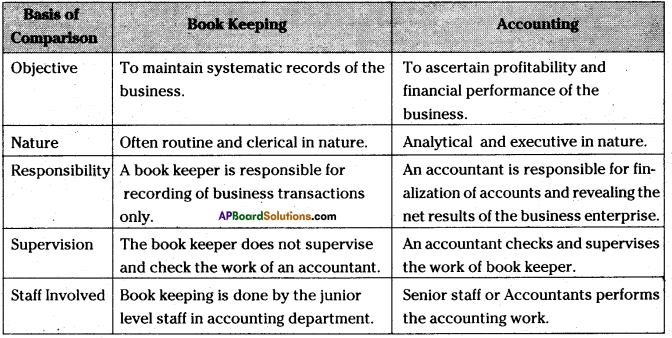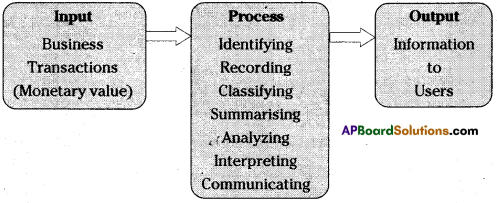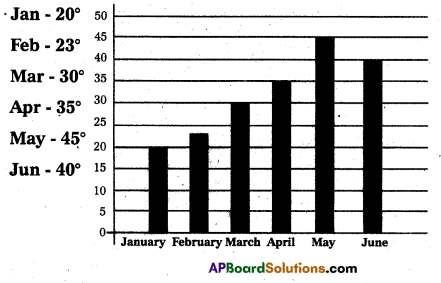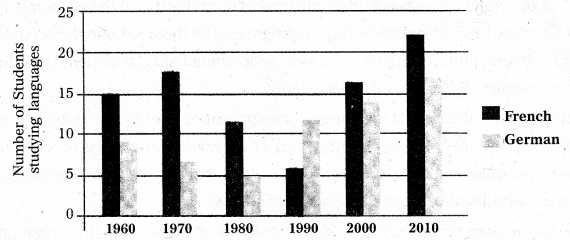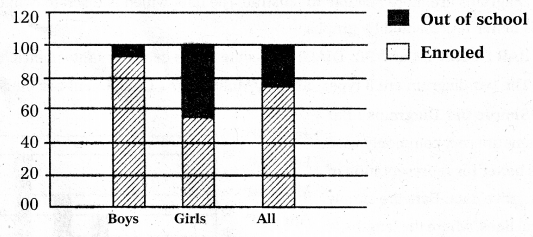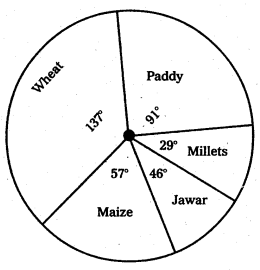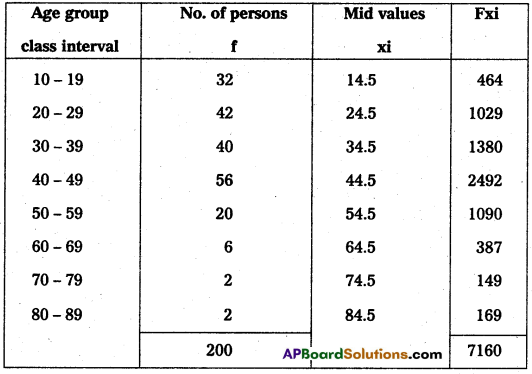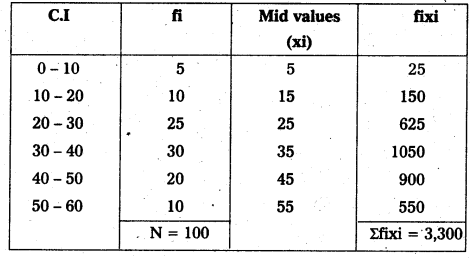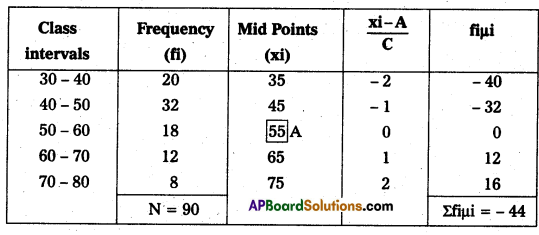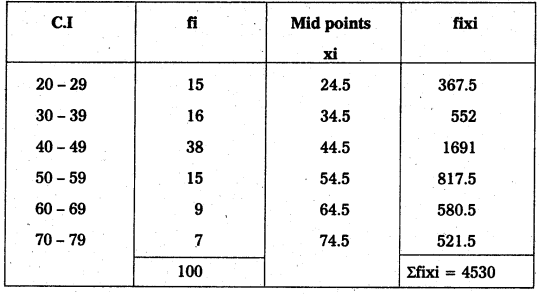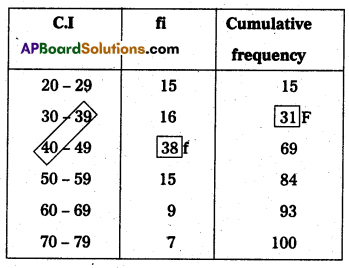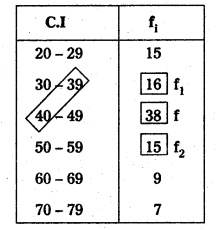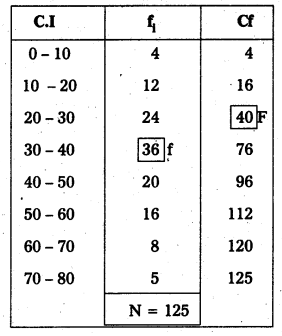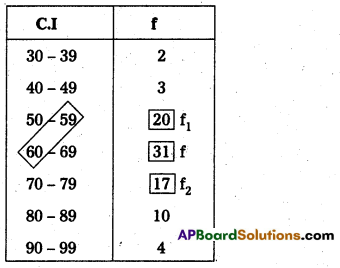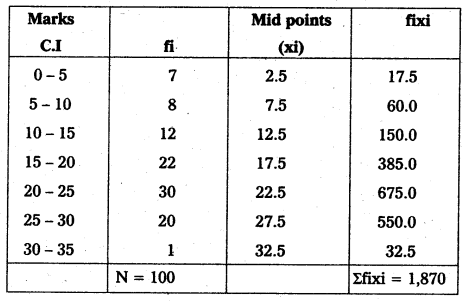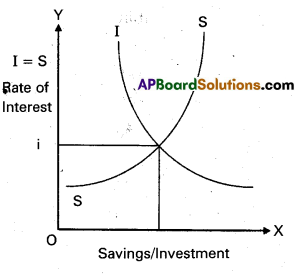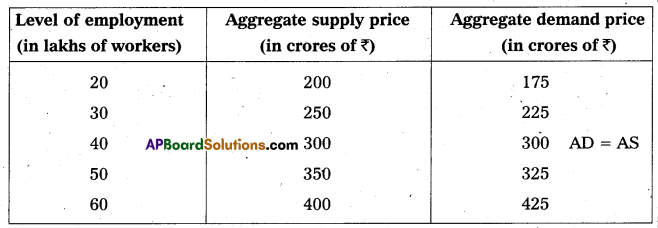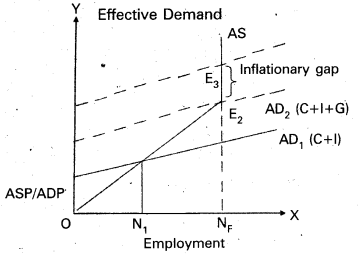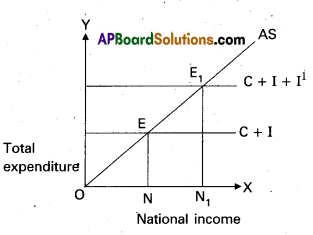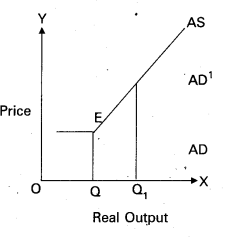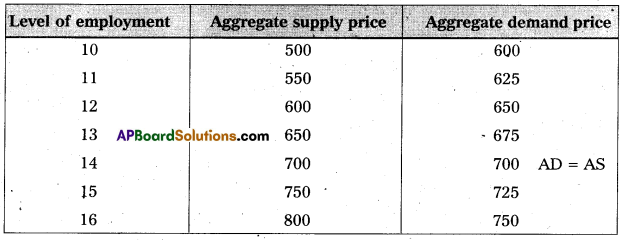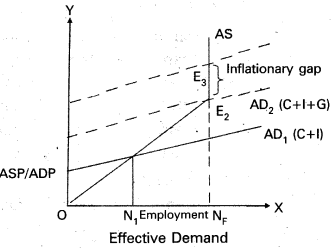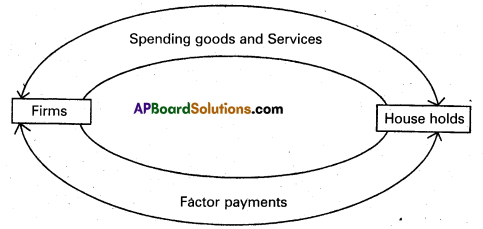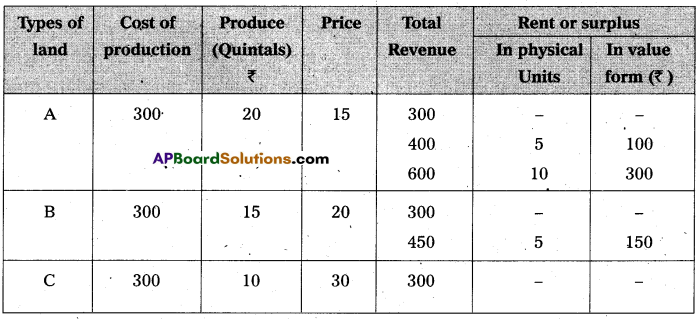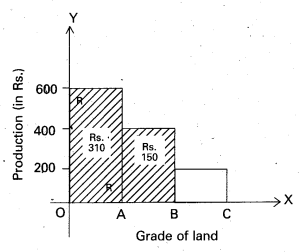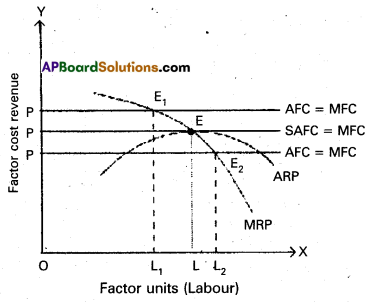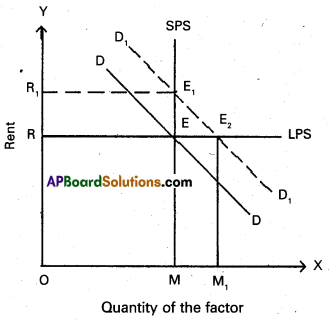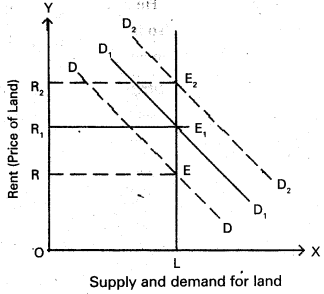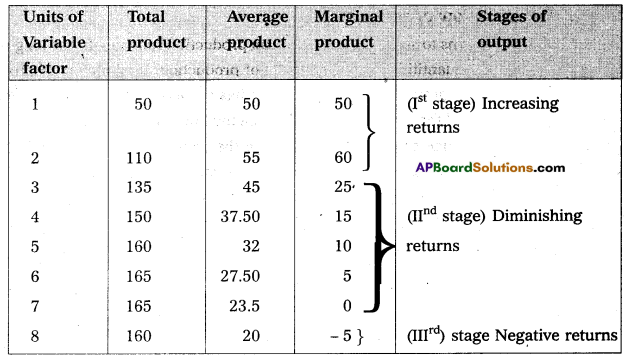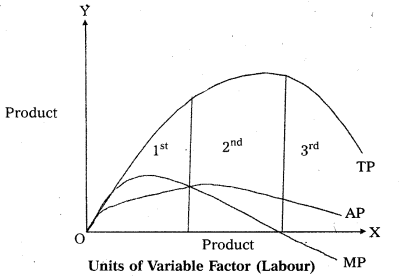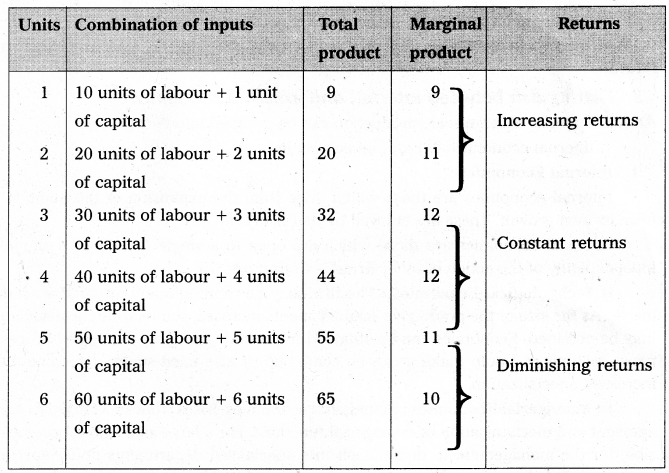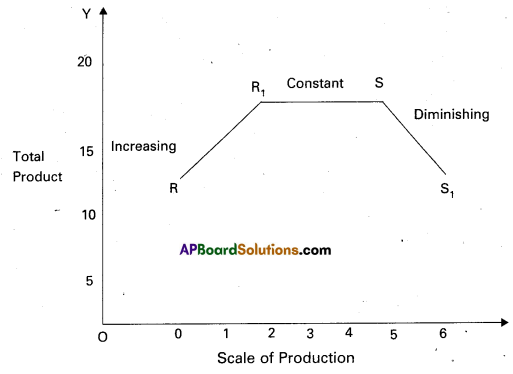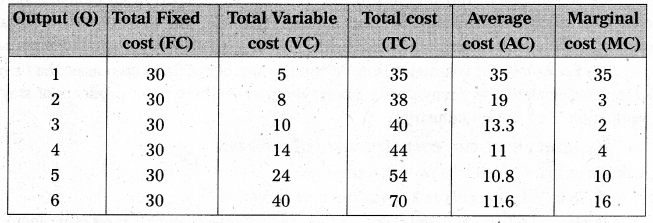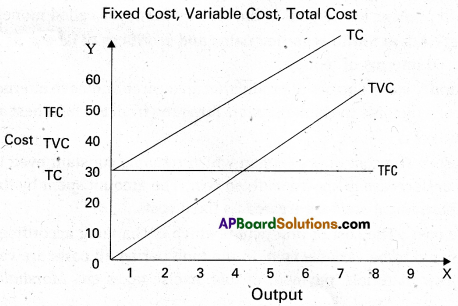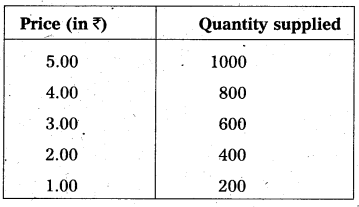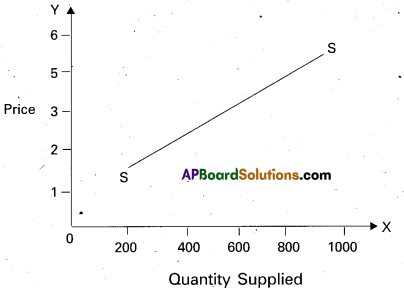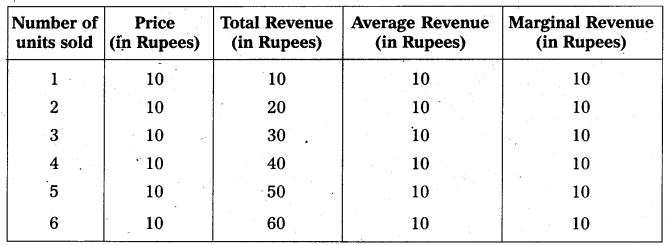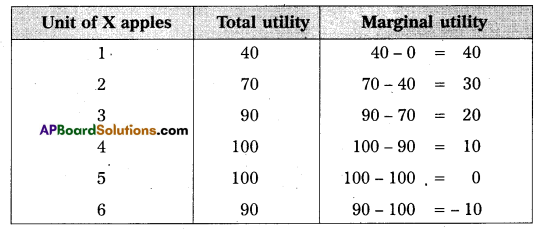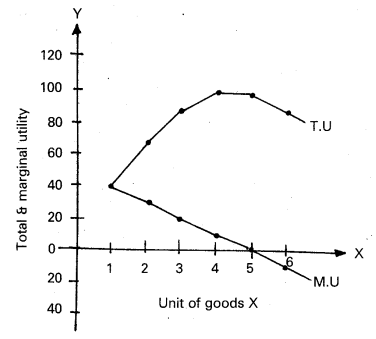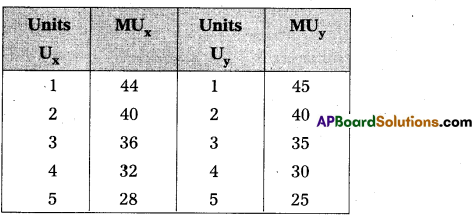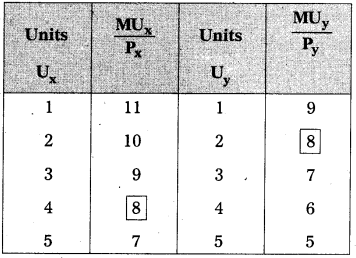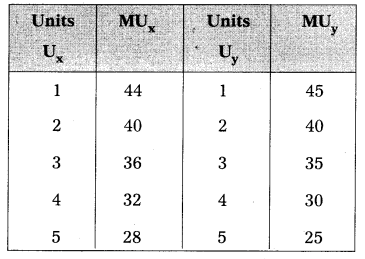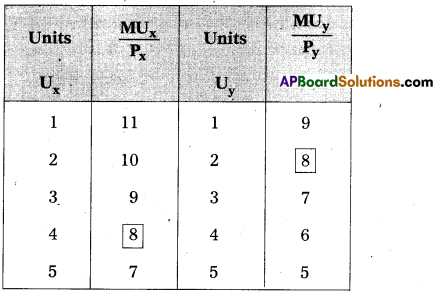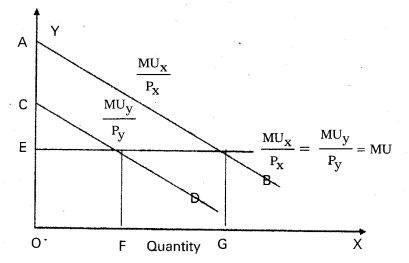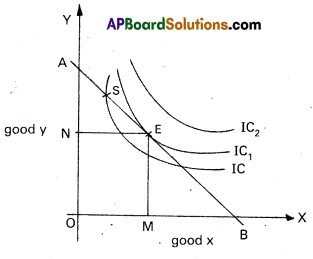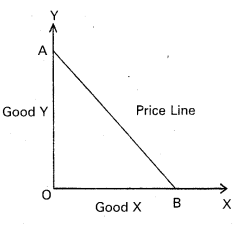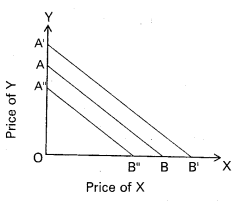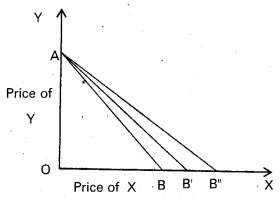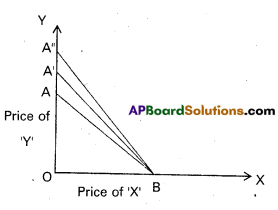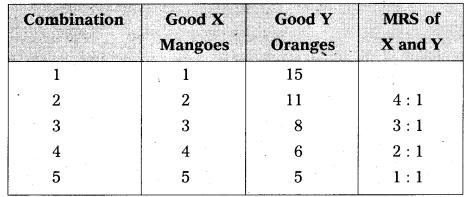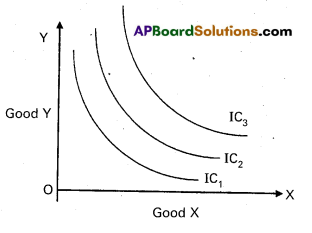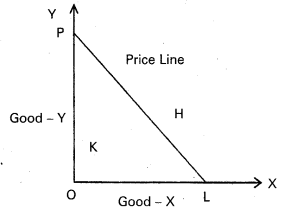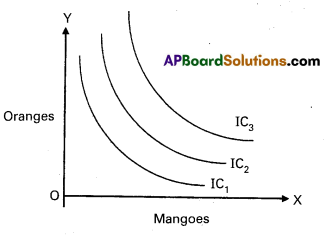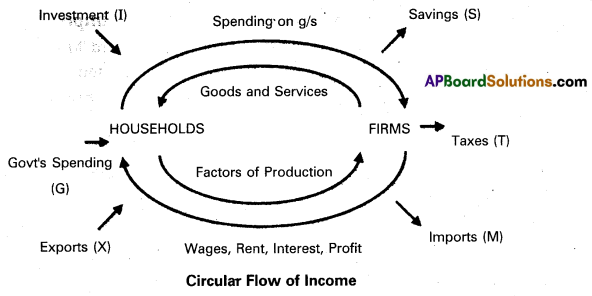Andhra Pradesh BIEAP AP Inter 1st Year Economics Study Material 9th Lesson Money, Banking and Inflation Textbook Questions and Answers.
AP Inter 1st Year Economics Study Material 9th Lesson Money, Banking and Inflation
Essay Questions
Question 1.
Examine the difficulties of the barter system.
Answer:
Barter system means exchange of goods. This system was followed in old days. But the population and its requirements are increasing, the system became very complicated. The difficulties of barter system are :
1) Lack of coincidence of wants : Under the barter system, the buyer must be willing to accept the commodity which the seller is willing to offer in exchange. The wants of both the buyer and the seller just coincide. This is called double coincidence of wants. Suppose the seller has a good and he is willing a exchange it for rice. Then the buyer must have rice and he must be willing to exchange rice for goat. If there is no such coincidence direct exchange between the buyer and the seller is not possible.
2) Lack of store value : Some commodities are perishables. They perish within a short time. It is not possible to the value of such commodities in their original form under the barter system. They should be exchanged before they actually perish.
3) Lack of divisibility of commodities : Depending upon its quantity and value, it may become necessary to divide a commodity into small units and exchange one or more units for other commodity. But all commodities are not divisible.
4) Lack of common measure of value : Under the barter system, there was no common measure value. To make exchange possible, it was necessary to determine the value of every commodity interms every other commodity.
5) Difficulty is making deferred,payments : Under barter system furture payments for present transaction, was not possible, because future exchange involved some difficulties. For example suppose it is agreed to sell specific quantity of rice in exchange for a goat on a future date keeping in view the recent value of the goat. But the value of goat may decrease or increase by that date.

Question 2.
Explain the functions of money.
Answer:
Money plays a vital role in modem economy. A modem economy is rightly known as monetary economy because of the crucial position that money occupies.
- According to ‘Robertson’ – “Anything which is widely accepted in payment for goods or it discharges of other kinds of business obligations”
- According to ‘Seligman’ – “One that possesses general acceptability”.
- According to Waker’ – “Money is what money does”.
Functions of money :
1. Primary functions :
a) Medium of exchange : Money serves as a medium of exchange. It removes the inconveniences of the barter system in which exchange of goods was possible if only there was double coincidence of wants. But money facilitates exchange of commodities without double coincidence watns. Any commodity can be exchange for money. People can exchange goods and services through the medium of money.
b) Measure of value : Money serves as a measure of the value of goods and services. As common measure of value it has removed the difficulty of the barter system and has made transactions simple and easy. The value of each commodity is expressed in the units of money. We call if the price.
2. Secondary functions : .
a) Store of value : The value of commodities and services can be stored in the form of more. Certain commodities are perishable. If they are exchanged for money before they perish, their value be preserved in .the form of money.
b) Standard of deferred payments : Money serves as a standard of deferred payments. The modern economies most of the business transactions take place on the basis of credit. An individual consumer or a business man may now purchase a commodity and pay for it in future as this function makes it possible to express future payments in terms of money.
c) Transfer of money : Money can be transferred from one person to another at any time at any place.
3. Contingent functions :
a) Measurement and distribution of National income : National income of a country be measured in money by aggregating the value of all commodities. This is not possible in a barter system similarly national income can be distributed to different factors of production making payment them in money.
b) Money equalises marginal utilises / productivities : The consumers can equalize marginal utilities of different commodities purchased by them with the help of money. We know how consumers equalize the marginal utility of the taste rupee they speed on each commodity. Similarly firms can also equalize the marginal productivities of different factors of production and maximize profits.
c) Basis of credit : Credit is created by banks from out of the primary deposits of money supply of credit, in an economy is dependent on the supply of nominal money
d) Liquidity : Money is the most important liquid asset. Interms of liquidity it is superior other assets. Money is centpercent liquid.

Question 3.
Write a note on the supply of money.
Answer:
The term supply of money is related to stock concept. There may be increase or decrease in the money stock over a period of time. Money supply determines the various factors i.e., rate of interest, credit availability, investment, national income and employment. This affects the general price level.
Components of money supply :
1) Currency issue by the Central Bank : Central Bank is the apex bank and enjoys the power of issue of currency. Currency consists of paper notes and coins. In India, RBI is the Central Bank and issue notes in the denominations of 1000, 500, 100, 50, 20, 10, 5 and 2 rupees. The one rupee note and coins are issued by the finance department of the government of India.
2) Demand deposits created by Commercial banks : Bank deposits are also considered as money supply. Commercial banks collect deposits from the public and creates credit out those deposits. Credit in this form is called derived or secondary deposits. This constitute nearly 80% of total money supply.
Monetary aggregates : In India money supply measured in terms of the following monetary aggregates.
M1 = Currency + demand deposits + other deposits
M2 = M1 + time liability portion of saving deposits with banks + certficates of deposits issued by banks + terms deposits maturing within one year.
M3 = M2 + term deposits over one year maturity + call term borrowings of banks,
M1, M2 and M3 as monetary measures.
Question 4.
Describe the functions of the commercial banks.
Answer:
Functions of commercial banks :
Primary functions :
a) Accepting deposits : The commercial bank just like any other money lender is doing money lending business bank receives public money in the form of deposits. The deposits mainly are of the following steps.
1) Current deposits : These deposits have two characteristics. One, there are no restrictions with regard to the amount of withdrawl and number of withdrawls. Banks normally do not pay any interest on current account deposits.
2) Savings deposits : The sole aim of banks in receiving these deposits is to promote the habit of thrift among low income groups. They have the following characteristics :
- two or three withdrawls per week are permited
- banks pay 4 to 5% interest (nominal) per annum or savings deposits.
3) Recurring deposits: People will deposit their money in these deposits as monthly installments for a fixed period of time. The bank after expiry of the said period will return the total amount with interest thereon. The rate of interest will be higher than the savings deposits.
4) Fixed deposits : Deposits received on fixed accounts are called fixed or time deposits. They are left with the bank for a fixed period. The following are the characteristics.
- The amount cannot be withdrawn before the expiry of the fixed period.
- Banks pay high rate of interest than any other deposits.

b) Advancing loans : Commercial banks release funds so collected for productive purposes by way of loans and advances. Commercial bank usually lend money by way of loans, cash credits, overdrafts and by discounting bills of exchange.
1) Cash credit: In this case, the borrower is given a loan. The amount of the loan is deposited in his account in the bank. The loan is not normally paid in cash. The borrower can draw money out of this account as per his needs.
2) Overdraft: It means allowing the depositor to overdraw his account upto a previous agreed limit. Banks allow overdrafts only to those persons who have their accounts in the bank. The overdraft is granted only for short period for customers.
3) Loans : Usually a loan is granted against the securities of assets or the personal security of the borrower bank loans and advances carry a high rate of interest. In addition, banks grant call loans for every short period, term loans for longer period and also grant consumer credit for buying durable goods.
4) Discounting bills of exchange : The banks facilitate trade and commerce by dis-counting the bills of exchange. This is the most popular form of bank lending.
Secondary functions :
a) Agency services : Banks act as agents, correspondents and representatives of their
customer. As an agent a commercial bank collect and pay cheques, drafts, bills and pay insurance premium subscriptions, rent, income tax etc, as per the instruction of their customers, Banks also act as trusties executors and attorneys. .
b) General utility services : Banks provide some general utility services like :
- Locker facility the safe custody and valuables.
- Issue traveller’s cheques and drafts
- Transfer of funds.
- Acting a referee to the financial standing of customers
- Issue letters of credit
- Finance foreign trade by discounts foreign bills of exchange.
Question 5.
Explain the functions of the central bank.
Answer:
Central bank is the apex bank of the banking system of a country. It controls, regulates, monitors all the activities of the banks in the banking system. The following are the functions performed by the central bank.
a) Note issue : In any country central bank alone is authorised to issue the currency notes. It has monopoly power of note issue. It not only issue the currency. It also controls the supply of money in the economy.
b) Banker to government: Central bank renders certain services to the government it acts as a banker, agent and financial advisor to the government. It maintains the accounts of the government funds, receives money and pay money on behalf of the government. It performs all foreign exchange transactions on behalf of the government and maintains the public debt and advises the government on all financial matters.
c) Banker’s bank : Central bank acts as banker’s bank it controls all the transactions of all banks and every bank must maintain a certain minimum cash reserve with central bank.
d) Lender of last resort: It serves as a lender of last resort to all the financial institutions viz. Commercial banks discount houses and other credit institutions. All these institutions approach central bank if they face the problem of liquidation. It also help the banks and other financial institutions by providing loans and advances against certain approved securities and rediscounts the bills on certain terms and conditions.
e) Controller of credit: This is the most important function of central bank. It controls the volume of credit in the economy through various monetary and fiscal policies. It takes some steps to increase or reduce the volume of credit as per the inflationary conditions of the economy. It controls the inflation by reducing the volume of credit and recession by expanding the supply in the economy.
f) Custodian of foreign exchange reserve : Central bank regulates all foreign exchange transactions in a country. It is responsible for exchange rate so it acts against the fluctuations in exchange rates and maintain standard exchange rate.

Question 6.
Describe the role played by the Reserve Bank of India.
Answer:
The Central Bank of our country is Reserve Bank of India. It was established in April 1935, with a share capital of ₹ 5 crores. It was originally owned by private shareholders but was nationalised by the government of India in 1949. It performs all its activities under the Reserve Bank of India Act 1934.
The main aim of. RBI is to achieve the monetary stability and to control the credit system of an economy. It performs the following functions.
1) Note issue : Reserve Bank of India enjoys the monopoly of note issue in the country. It maintains a minimum ₹ 200 crores of gold and foreign exchange reserves of which gold should be ₹ 115 crores. It issue notes in the denominations of ₹ 1,000, ₹ 500, ₹ 100, ₹ 50, ₹ 20, ₹ 10, ₹ 5 and ₹ 2. One rupee note and coins are issued by the finance department of the Government of India. Reserve Bank of India prints all the currency notes in the security press of the Government of India.
2) Banker to Government : Reserve Bank of India acts as the banker, agent and adviser to the Government of India. It receives money and makes payments on behalf of the government and gives temporary advances to the government. It advises the government in all financial matters.
3) Banker’s Bank : Reserve Bank serves as a banker not only to the government but also to the banks. It provides financial assistance to the commercial banks by giving loans and rediscounting the bills of exchange. It helps the banks by acting as a clearing house for settlement of inter bank transactions and controls the supply of money in the economy through cash reserve ratio.
4) Lender of last resort : It acts as lender of last resort by granting loans and advances to the commercial banks against some securities viz., treasury bonds, treasury bills and other approved securities. It also provides financial help to banks by rediscounting the eligible bills of exchange.
5) Custodian of foreign exchange reserves : Reserve Bank of India as a member of the International Monetary fund. It regulates all foreign exchange transactions in the country. It controls and regulates the purchase and sale of foreign exchange through restrictions on exports and imports to maintain the official rate of exchange.
6) Credit controller : Reserve Bank of India controls the volume of credit in the country. It controls the credit through different methods by appropriate monetary or fiscal policies. It announces credit policy for every six months based on the credit needs of the country. Through this it controls the inflation and deflation.
7) Promotional and development functions: Reserve Bank of India inorder to achieve economic development performs certain promotional and developmental functions.
They are :
- Promoting various financial institutions to provide industrial finance.
- It takes steps for establishment of banks throughout the country and expansion of their branches.
- Encourage the financial institution to provide financial help to agriculture and rural credit.

Question 7.
Define inflation. Explain the causes of inflation.
Answer:
Inflation means a rise in the general price level over a long period of time. It occur due to the following reasons.
- Increase in the aggregate demand of commodities.
- Inadequate supply of commodites.
- Increase in the cost of production.
I. The factors that the effect the increase in demand.
- Heavy pressure of population.
- Increase in economy’s money supply.
- More public expenditure towards various welfare schemes.
- Reduce in rates of direct taxes.
- Increase in the income levels of individuals.
- Deficit financing by government.
- Conspicious spending by the people having black money.
- Production in direct tax rates.
II. Factors that increase the cost of production :
- Increase in costs of various factors of production.
- Increase in tax rates.
- Increase in the prices of technology.
- Devaluation of domestic currency.
- Inefficient management and no control on expenditure.
- Lack of optimum allocation of resources.
- Devaluation of domestic currency.
III. Factors that cause inadequate supply :
- Irregular monsoons, floods, interior seeds in agriculture.
- Non-availability of scarcity of inputs and raw materials.
- Under-utilisation of productive capacity.
- Shortage of investment due to non-availability of institutional credit.
- Artificial scarcity due to black-marketing.
- Exports at the cost of domestic supply.
- Long gestation period of certain industries.

Question 8.
Discuss the impact of inflation.
Answer:
Inflation refers to a persistent upward movement in the general price level rather than once for all rise in it.
The effects of inflation can be divided into two sub-heads.
- Effects of production
- Effects of distribution
It will affect all economic activities in the economy.
A) On production :
a) Mild inflation stimulates production and it increases the profit margin of entrepreneurs.
b) High inflation rate hinders production. ;
c) Inflation discourages savings. This affects the capital formation which in turn affects production.
B) On distribution :
Inflation produces a deep impact on the distribution of income and wealth of society. A prolonged period of inflation results in the distribution of wealth in favour of rich and affluent classes of society. The concrete effects of inflation on various groups of society are as follows.
Effects on distribution : Inflation produces a deep impact on the distribution of income and wealth of society. A prolonged period of inflation results in the distribution of wealth in favour of inflation on various groups of society are as follows.
1) Debtors and creditors : During inflation debtors are generally the gainers while the creditors are the losses. The reason is that the debtors had borrowed when the purchasing power of money was high and now return the loans when the purchasing power of money is low due to rising prices.
2) On fixed income groups : Those who get fixed income lose from inflation. Salaried persons people living oh past savings, pensioners, interest earners are the worst suffers during inflation because their income remain fixed.
3) On working class: During inflation working class also suffers worst because wages do not rise as much as the prices of commodities. In addition there is a time lag between the rise in prices and rise in wages. If the trade unions are strong they may get equal increase in money incomes compared to rise in prices.
4) Entrepreneurs : They experience windfall gains as the prices at their stocks suddenly go up. Inflation thus re-distributes income and wealth in such away as to harm the interest of creditors, labours, fixed income groups and favours the businessmen, traders and debtors. By meaning the rich richer and poor poorer, inflation is socially undesirable.
C) Social impact: Economic inequality leads to unequal opportunities in matters of health, education and employment. This results in social injustice.
D) Political effect: Inflation widens social and economic disparities. It leads to for political movements and if government is not responsive. This movement may threaten the stability of governments. .
Short Answer Questions
Question 1.
State any three definitions of money, which definition do you consider better and why ?
Answer:
Money plays a vital role in modem economy. A modem economy is rightly known as monetary economy because at the crucial position that money occupies. In the olden days goods were exchanged for goods. Such system is called barter system. However when economics grew there was a tremendous increase in the wants of the people as well as in the number of transactions then barter system became more difficult, in order to eliminate the difficulties in the barter system money came into existence.
Definition of money: Several economists have defined money in several ways. Some of the prominent definitions are given below.
According to Waker’ – “Money is what money does”.
According to ‘Robertson’ – Money as” anything which is widely accepted in payment for goods or in discharge of other kinds of business obligations”.
According to ‘Seligman’ – Money as “one that possesses general acceptability”.
According to “Crowther” – Money as “anything that is generally acceptable as a medium of exchange and which at the same time acts as a measure and store of value”.
It may be found from the above definitions that the main focus is on general acceptability. Anything that used as money should have the general acceptance of the public as medium of exchange because it is for direct exchange of commodities money is fundamentally required. It acts as a common measure of value. However its suitability as a store of value is equally important. Therefore we can consider Crowther’s definition as relatively more comprehensive. It is elaborate and covers the most important functions of money.

Question 2.
Distinguish between different types of money.
Answer:
Money can be grouped into various items based on the value, material used and the legal status. They are :
1) Commodity money and representative money: Money is classified into commodity money and representative money on the basis of the intrinsic value it possess. If the intrinsic value is equal to the face value of coin is called commodity money and if the value is less than the face value is called representative money.
2) Legal tender money and optional money : On the basis of legality money is divided into legal tender money and optional money. If money is accepted as per law by every one is called legal tender money. If the acceptance is optional and not according to law is called optional money.
Ex: Cheques.
3) Metallic money and paper money : Based on the material used money can be divided into metallic and paper money. If money is made up of metals such as silver, nickle, steel etc., all coins are metallic money and if money is printed on papers is called paper money. ^
4) Standard money and token money: If the face value and intrinsic value are same. The money is called standard money and if the face Value is higher than the intrinsic value is called token money.
5) Credit money : It is also called as bank money. This is created by commercial banks. This refers to the bank deposits that are repayable on demand and can be transferred from one person to other through cheques.
Question 3.
Explain the concept of the legal tender money.
Answer:
Based on the legality money is divided into legal tender money and optional money.
Legal tender money is that money which is accepted by the people as per Jaw while paying the amount for goods and services. This is further divided into two types. They are :
- Limited legal tender money.
- Unlimited legal tender money.
1) Limited legal tender money : The money which no persons can be forced to accept beyond a certain limit. The maximum limit for acceptance will be decided by the government.
Ex : 5 paise, 10 paise, 25 paise. The limit in case of these Coins is 25 rupees.
2) Unlimited legal tender money : This money which everyone should accept without any limit in payment of goods and services.
Ex : 1 rupee paper note, 5 rupee coins, 2 rupee coins, 1 rupee and 50 paise coins.

Question 4.
State the contingent functions of money.
Answer:
Money plays a vital role in modem economy.
According to Waker’ – “Money is what money does”.
According to ‘Robertson’ – “Anything which is widely accepted in payment for goods discharge of other kinds of business obligations”.
Contingent functions :
a) Measurement and distribution of National income: National income of a country be measured in money by aggregating the value of all commodities. This is not possible in a barter system similarly national income can be distributed to different factors of production by making payment then in money.
b) Money equalises marginal utilises / productivities : The consumers can equalize marginal utilities of different commodities purchased by them with the help of money. We know how consumers equalize the marginal utility of the taste rupee they speed on each commodity Similarly firms can also equalize the marginal productivities of different factors of production and maximize profits.
c) Basis of credit: Credit is created by banks from out of the primary deposits of money supply of credit, in an economy is dependent on the supply of nominal money.
d) Liquidity : Money is the most important liquid asset. Interms of liquidity it is superior other assets. Money is cent percent liquid.
Question 5.
Explain different hinds of deposits accepted by the commercial banks.
Answer:
Commercial banks pay a very important role in the economic growth of a country. Commercial banks are the most important source of institutional credit in the money market. Banks attract savings from the people and encourage investment in industry, trade and commerce. Bank is a profit seeking business firm dealing in money and credit.
The word bank is derived from the “German” word “bankco” which means joint stock or joint fund. Banking in Britain originated with the lending of money by wealthy individuals to merchants who wished to borrow.
According to ‘Richard Sydney’ sayers – “Banks are institutions whose debts .usually referred to as “Bank deposits” are commonly accepted in final settlement of other people’s debts”.
Accepting deposits : The commercial bank just like any other money lender is doing money lending business. Bank receives public money in the form of deposits. The deposits mainly are of the following types.
a) Current deposits : These deposits have two characteristics.
- There are no restrictions with regard to the amount of withdrawal and number of withdrawls.
- Banks normally do not pay any interest on current account deposits.

b) Savings deposits : The sole aim of banks in receiving these deposits is to promote the habit of thrift among low income groups. They have the following characteristics :
- Two or three withdrawals per week are permitted.
- Banks pay 4% to 5% interest per annum on savings deposits.
c) Recurring deposits : People will deposit their money in these deposits as monthly installments for a fixed period of time. The bank after expiry of the said period will return the total amount with interest thereon. The rate of interest will be higher than the saving deposits.
d) Fixed deposits : Deposits are fixed accounts are called fixed or time deposits they are left with the bank for a fixed period. The following are the characteristics.
- The amount cannot be withdrawn before expiry of fixed period.
- Bank pay high rate of interest than any deposits.
Question 6.
Explain different types of loans and advances paid by the commercial banks.
Answer:
According to “Crowther”- “A bank is a dealer in debts his own and other people”.
Banking means the accepting for the purpose of lending or investment of deposits of money from the public repayable or demand or otherwise and withdrawable by cheque, draft or otherwise.
Advancing loans : Commercial banks refease funds so collected for productive purposes by way of loans and advances. Commercial bank usually lend money by way of loans, cash credit, overdrafts and by discounting bills of exchange. ‘
a) Cash credit: In this case, the borrower is given a loan is deposited in his account in the bank. The loan is not normally paid in cash. The borrower can draw money out of this account as per his needs.
b) Overdraft: It means allowing the depositor to overdraft his account upto a previously agreed limit. Banks allow overdraft only to those persons who have their accounts in the bank. The overdraft is granted only for a short period for customers.
c) Loans : Usually a loan is granted against the securities of assets or personal security of the borrowed bank loans and advances carry a high rate of interest. In addition, banks grant call loans for every short period: Term loans for longer period and also grant consumer credit for buying durable goods.
d) Discounting bills of exchange : The bank facilitates ‘trade and commerce’ by ‘ discounting the bills of exchange. This is the most popular form of bank lending.
Question 7.
Distinguish between the roles of a commercial bank and a central bank with reference to credit.
Answer:
Controlling credit is the most important function of the central bank. It controls the volume of credit in the economy through various monetary and fiscal policies. It takes . some qualitative and quantitative step to increase or reduce the volume of credit as per the conditions of the economy.
It controls the inflation by reducing the volume of credit and controls recession by expanding the supply of credit in the economy.
Commercial bank also provide credit facilities in the form of loans and .advances. Commercial banks release funds so collected for productive purposes by way of loans and advances. Commercial bank usually lend money by way of loans, cash credits, overdrafts and by discounting bills of exchange.
a) Cash credit: In this case, the borrower is given a loan. The amount of the loan is deposited in his account in the bank. The loan is not normally paid in cash. The borrower can draw money out of his account as per his needs.
b) Overdraft: It means allowing the depositor to overdraft his account upto a previously agreed limit. Bank allow overdraft only to those persons who have their accounts in the bank. The overdraft is granted only for short period for customers.
c) Loans : Usually a loan is granted against the securities of assets or the personal security of the borrower bank loans and advances carry a high rate of interest. In addition, bank grant call loans for every short period. Term loans for a longer period and also grant consumer credit for buying durable goods.
d) Discounting bills of exchange : The bank facilitates trade and commerce by discounting th,e bills of exchange. This is the most popular form of bank lending.

Question 8.
Explain why the central bank is called banker’s bank ?
Answer:
The central bank acts as a banker’s bank because of the following functions.
a) Every bank maintained a certain minimum of cash reserves with the central bank as a statutory obligation. The ratio of cash reserve to the deposits of the commercial banks will be prescribed by the central bank.
b) It serves as a lender of last resort and provides financial assistance to the scheduled bank by rediscounting the eligible bills of exchanges and provides loans and advances, against approved securities. This helps the commercial banks to over come the problems of liquidity.
c) It acts as cleaning house for The commercial banks to settle their inter bank accounts. Each and every commercial banks to maintains accounts with the central bank. Because of this central bank transfer funds from one bank to another bank very easily.
Question 9.
What do you understand by lender of last resort’ ?
Answer:
The central bank serves as a lender of last resort to all the financial institutions i.e., commercial banks, discount houses and other credit institutions. These institutions can also approach the central bank when they face the problem of liquidity. The central bank helps the commercial banks by providing loans and advances against some approved securities and also help to rediscount the commercial banks bills subject to certain terms and conditions.
Question 10.
State the objectives of a central bank. [March 18, 17, 16]
Answer:
Central bank is the apex bank of the baning system in a country. It controls, regulates and supervises the activities of the banks in the banking system of a country. The following are the objectives of the central bank.
- Maintaining the internal value of currency.
- Preserve the external value of currency.
- Ensure price stability.
- Promote economic development.
- Develop financial institutions.

Question 11.
Write a note on the Reserve Bank of India. [March 18, 16]
Answer:
Reserve Bank of India is the central bank of India. It was established in April 1935, with a share capital of ₹ 5 crores. It was originally owned by private shareholders and was nationalised by the government of India in 1949. It performs all the functions of central bank according to the “Reserve Bank of India Act 1934”. .
The main objectives of Reserve Bank of India are :
- Regulating the issue of currency notes.
- Providing guidance to the commercial banks.
- Controlling the credit system of the economy
- Achieving the monetary stability in the economy.
- Implementing the uniform credit policy throughout the country.
Question 12.
Explain any three definitions of inflation.
Answer:
Inflation we mean a general rise in the prices in the ordinary language it is rapid upward movement of prices in a broader sense. The term inflation refers to persistent rise in the general price level over a long period of time.
According to Prof.Hawtrey “Issue of too much currency”
According to ’Dalton’: Defined inflation as “Too much Money is chasing too few goods”.
According to ‘Pigou’: “Inflation exists when money income is expanding more than in proportion to increase in earning activity”.
According to Irving Fisher : “Inflation occurs when the volume of money increases faster than the available supply of goods”.
According to Samuelson : “Inflation denotes a rise in the general level of prices”.
Question 13.
Distinguish between demand – pull and cost – push inflation.
Answer:
It refers to a persistent upward movement in the “general price level rather than once for all rise in it. If results in a decline of the purchasing power. There is no generally accepted definition to inflation.
According to “Hawtrey” is “issue of too much currency”.
According to “Dalton” as “too much money chasing too few goods”.
Demand – pull inflation : The most common cause of inflation is pressure of even increasing aggregate demand for goods and services compared to the rise of aggregate supply. If aggregate demand for goods and services exceeds aggregate supply of goods and services prices rise. This is called “demand – pull inflation”.
Cost – push inflation : As the result of rise in the cost of production of goods and services, prices. This is. called cost – push inflation. It is caused by increase in wage enforced by trade unions through strikes or increase in other factor costs.
On this two types of inflations – cost – push inflation is much more difficult to control than demand – pull inflation the reason is obvious. Any attempt to cutdown wages by the authorities will be met by stiff resistance on the part of the workers.

Question 14.
State the types of inflation. [March 17]
Answer:
Inflation means a general rise in prices. Based on the rate of inflation, it may be divided into four types.
- Creeping inflation : When rise in the prices is very slow and small, it is called creeping inflation.
- Walking inflation : This is the second stage of inflation. The inflation rate will be between 2% and 4%.
- Running inflation : When the rate of inflation is in the range of 4-10% per annum, it is called running inflation.
- Galloping inflation or hyper inflation : If the inflation rate exceeds 10%, gallop-ing inflation occurs. It may also called hyper inflation.
Question 15.
Explain the effects of inflation on distribution.
Answer:
Effects of inflation : A period of prolonged persistent and continuous inflation affects everyone in the economy it effects production and distribution. Income and employment etc., it is goods so long as it is under control of the economy.The effects of inflation can be discussed under two sub-heads.
- Effects on production
- Effects on distribution
Effects on distribution : Inflation produces a deep impact on the distribution of income and wealth of society. A prolonged period of inflation results in the distribution of wealth in favour of inflation on various groups of society are as follows.
1) Debtors and creditors : During inflation debtors are generally the gainers while the creditors are the losses. The reason is that the debtors had borrowed when the purchasing power of money was high and now return the loans when the purchasing power of money is low due to rising prices.
2) On fixed income groups : Those who get fixed income lose from inflation. Salaried persons people living on past savings, pensioners, interest earners are the worst suffers during inflation because their income remain fixed.
3) On working class: During inflation working class also suffers worst because wages do not rise as much as the prices of commodities. In addition there is a time lag between the rise in prices and rise in wages. If the trade unions are strong they may get equal increase in money incomes compared to rise in prices.
4) Entrepreneurs : They experience windfall gains as the prices at their stocks suddenly go up. Inflation thus re-distributes income and wealth in such away as to harm the interest of creditors, labours, fixed income groups and favours the businessmen traders and debtors. By meaning the rich richer and poor poorer, inflation is socially undesirable.

Question 16.
Enumerate the measures for control of inflation. [March 18, 16]
Answer:
To control the inflation the government has taken various steps. They are :
- Increase the production in the long run.
- Implementing proper monetary and fiscal policies to reduce the supply of money • and credit.
- Controlling prices and eliminating black markets.
- Importing the goods which are scares in supply from outside countries.
- Introducing rationing and quota system in case of mass consumption of goods.
- Distribution of goods to all the needy sections of the people.
Very Short Answer Questions
Question 1.
Double coincidence of wants
Answer:
Under Barter system a buyer should be able to find a seller who is not only requires the same commodity but should possess the commodity required by the buyer the want of both the buyer and the seller must coincide. This is called coincidence of wants.
Question 2.
Standard of deferred payments
Answer:
Money serves as a measure of deferred payments. Deferred payments refers to future payments. As such money is helpful not only in current transaction but also in conducting future transaction thus money acts as a bridge from present to the future, i.e., an efficient store of value.
Question 3.
Store of value
Answer:
Money acts par excellence as a store of value money preserves and carries values through time and place it is convenient to store money rather than goods. Money does not come down in value by being stored up like commodities.

Question 4.
Liquidity [March 18, 17, 16]
Answer:
Liquidity means the ease with which one can convert a financial asset into a medium of exchange. Liquidity is greatest for money as an asset because money itself is a medium of exchange. In fact money is the only asset which possess perfect liquidity.
Question 5.
Currency
Answer:
Currency consists of paper notes and coins. Paper notes are. issued by government or the central bank of a country. In India, the Reserve Bank which is the central bank of India issue currency notes at all denominations. Except one rupee notes. The government of India issues them coins are metallic tokens and are produced in the limits of government.
Question 6.
Near money
Answer:
The near money refers to those highly liquid assets which are not accepted as money but then can be easily converted into money within a short period.
Ex : Saving bank deposit, shares, treasury bills, bonds etc.
Question 7.
Credit money
Answer:
This is also called bank money. This is created by commercial banks. This is refers to the bank deposits that are repayable on demand and which can be transferred from one individual to the other through cheques.
Question 8.
Limited legal tender
Answer:
Money which no person can be forced to accept beyond certain limit. The maximum limit for acceptance is decided by the government. In India small coins 5 paise, 10 paise, 25 paise are limited legal tender the maximum limit of ₹ 25.

Question 9.
Token money
Answer:
It is the money or unit of currency whose face value is higher than the intrinsic value. It is not convertible it facilitates transactions and accepted by the public as medium of exchange.
Question 10.
Time deposits
Answer:
Time deposits are deposits that are not payable on demand. They are repayable only after their maturity period. These deposits are called term deposits. They are two types, i) Fixed deposits ii) Recurring deposits.
Question 11.
Recurring deposits
Answer:
These are called fixed deposits but the deposits money is paid not in lumpsum. But every month for various periods from 12 to 120 months.
Question 12.
Demand deposits
Answer:
The deposits which are payable on demand without any prior notice demand deposits they can be transferred from one person to person. All current deposits are demand deposits.
Question 13.
Cash credit
Answer:
Bank give cash credit to business form and industries against current assets. Such as shares, bonds, etc., cash credit is an open credit.
Question 14.
Overdraft [March 18, 17, 16]
Answer:
Overdraft is allowed on current account only the current account holders are given the facility overdraft by which they are allowed to draw an amount above their balances.
Question 15.
Discounting of bills of exchange
Answer:
Bills of exchange are the written undertaking received by the seller from the buyer against the credit transaction. The person one who possesses bill can discount the bill in the bank. If they need money.

Question 16.
Creation of credit [March 18]
Answer:
It means the process of creating credit from the depositor received by the bank from the customers to those who is in need of money in the form of loans and advances.
Question 17.
Clearance house
Answer:
Central Bank acts as a clearing house for the commercial banks to settle their interbank accounts all commercial banks maintain their accounts with the central bank.
Question 18.
Lender of last resort
Answer:
The central bank serves as lender of last resort not only to commercial banks but also other credit institutions they approach central bank when they face the problem of liquidity and rediscounting the bills and taking loans.
Question 19.
Reserve money
Answer:
The amount kept by the banks in the bank to use in the future to face the unfore seen events these reserves will be used by banks to lend loans and reduce the losses in the future.
Question 20.
Reserve Bank of India
Answer:
Reserve Bank of India is the Central Bank of India. It was established in April 1935 with a share capital of ₹ 5 crore. It was nationalised by government of India in 1949 it acts under the Reserve Bank of India 1934.

Question 21.
Meaning of inflation
Answer:
The term inflation refers to persistent rise in the general price level over a long period of time. Money supply increase, money value will be fallen, result in purchasing power will be decline.
Question 22.
Consumer Price Index (CPI)
Answer:
This is the index of prices of a given basket of commodities which are brought by the representative consumer. CPI is expressed in percentage terms.
Question 23.
Wholesale Price Index (WPI)
Answer:
Whole sale price is that price at which goods are traded in bulk. The index for wholesale price is called Wholesale Price Index (WPI).
Question 24.
Demand – Pull inflation
Answer:
Inflation caused by the increase in the aggregate demand for commodities over aggregate supply is called demand – pull inflation. Aggregate demand increases due to increase in the income level of the people.
Question 25.
Cost-push inflation
Answer:
Inflation caused by the rise in cost of production is called cost – push inflation. Cost of production may rise due to the increase in wages forced by the trade unions of government.

Question 26.
Hyper inflation [March 16]
Answer:
Hyper inflation is also known as galloping inflation. If the inflation rate exceeds 10% per annum is called hyper inflation.
Question 27.
Inflation and value of money.
Answer:
Inflation and value of money are important aspects of macro economics. They play a major role in the functioning of the economy and bear large influence on all economic activities affecting the levels of output, income, employment etc.
![]()
![]()
![]()
